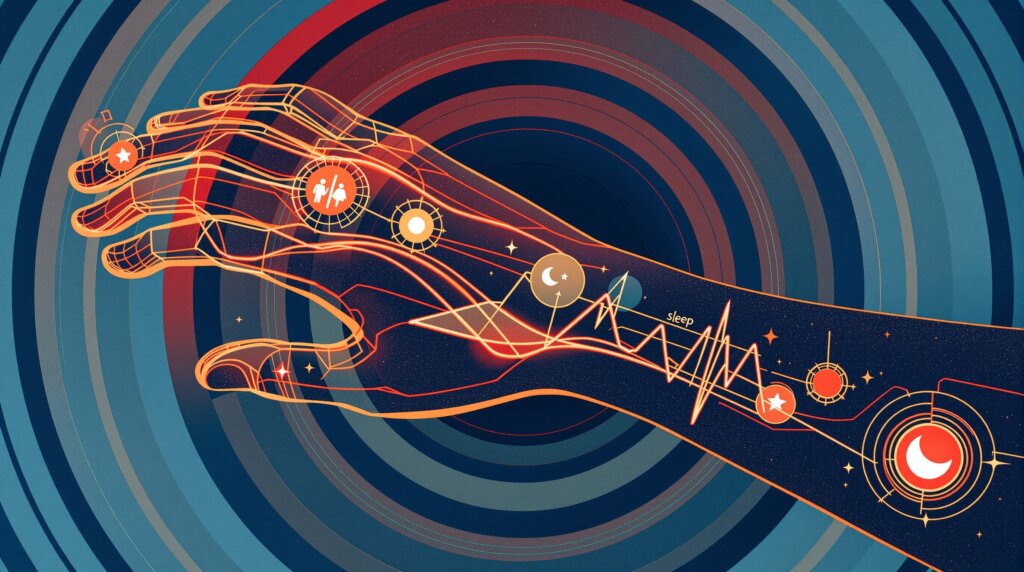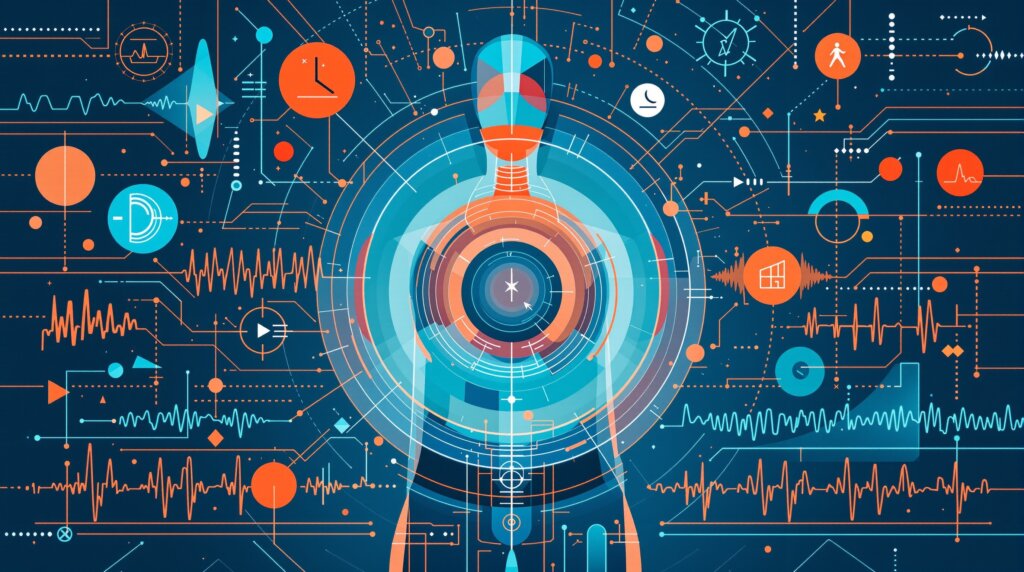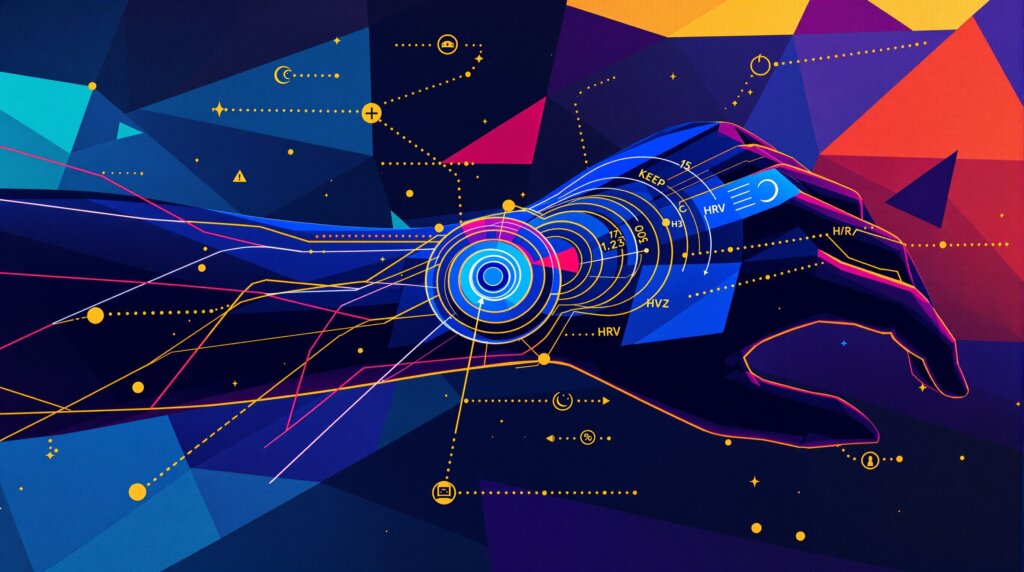The Foundation of Optimal Health: Understanding Sleep Through Modern Technology
Why Sleep Matters More Than You Think
Sleep often takes a backseat to our busy lives, yet it remains one of the most critical pillars of health and longevity. Quality sleep doesn’t just help you feel refreshed—it directly impacts cognitive function, immune response, metabolic health, and even cellular repair processes. Poor sleep patterns may contribute to accelerated aging, increased disease risk, and diminished quality of life.
The rise of consumer health wearables has revolutionized how we approach sleep optimization. These sophisticated devices have moved beyond simple activity tracking to provide detailed insights into our nightly rest patterns. Modern health monitoring bands and rings can now track sleep stages, measure heart rate variability during rest, and provide actionable data to help improve sleep quality.
However, understanding the science behind these devices—and their limitations—is crucial for making informed decisions about your sleep health. While wearable technology offers valuable insights, it’s important to recognize that these tools work best when combined with healthy sleep habits and, when necessary, professional medical guidance.

How Sleep Tracking Technology Actually Works
The Gold Standard vs. Consumer Devices
To understand how health monitoring bands track sleep, it’s helpful to know about polysomnography (PSG)—the clinical gold standard for sleep assessment. PSG involves monitoring brain waves, eye movements, muscle activity, and breathing patterns in a controlled laboratory setting. This comprehensive approach provides the most accurate picture of sleep architecture, including precise measurements of light sleep, deep sleep, and REM stages.
Consumer wearables take a different approach, relying primarily on motion sensors (accelerometers) and heart rate monitoring to estimate sleep patterns. These devices analyze movement patterns—periods of stillness typically indicate sleep, while frequent movement suggests wakefulness. Heart rate data adds another layer, as your cardiovascular patterns tend to change predictably during different sleep stages.
The technology is quite sophisticated, but it’s not without limitations. Sleep stage classification, particularly distinguishing between REM and deep sleep, can be challenging for wearable devices. Factors like stress levels, medications, age, and even your sleeping environment may influence the accuracy of these measurements. This doesn’t mean the data is unreliable—rather, it should be viewed as a helpful estimate rather than a clinical diagnosis.
Understanding Accuracy and What the Data Really Means
Separating Facts from Marketing Claims
When evaluating sleep tracking accuracy, researchers often use statistical methods like Bland-Altman plots to compare wearable devices against PSG results. These studies reveal that while consumer devices are generally reliable for detecting sleep versus wake states, they’re less precise when it comes to specific sleep stage classification.
Most quality health monitoring devices show good agreement with clinical standards for total sleep time and basic sleep efficiency metrics. However, they may occasionally overestimate or underestimate certain sleep stages. REM sleep detection, in particular, tends to show more variability compared to deep sleep measurements. This proportional bias doesn’t make the devices useless—it simply means users should focus on trends over time rather than obsessing over single-night measurements.
Device consistency also varies from night to night, which is actually quite normal. Your sleep patterns naturally fluctuate based on daily stress, physical activity, diet, and countless other factors. A good sleep tracking device should capture these variations while providing a reliable baseline for your personal sleep patterns.
The key is understanding that these devices excel at providing relative measurements and long-term trends rather than absolute clinical precision. For most users interested in optimizing their sleep and overall health, this level of accuracy is more than sufficient for making meaningful lifestyle adjustments.
Real-World Benefits and Practical Applications
Beyond the Numbers: How Sleep Data Improves Daily Life
While sleep tracking devices may not match laboratory-grade precision, they offer something arguably more valuable: continuous, real-world monitoring in your natural sleep environment. This provides insights that clinical sleep studies, which typically involve just one or two nights in an unfamiliar setting, simply cannot capture.
Healthcare professionals are increasingly recognizing the value of consumer sleep data for patient monitoring and decision-making. Nurses and other healthcare providers often find wearable sleep data helpful for understanding patient patterns and tracking recovery progress. The convenience and comfort of wearing these devices mean users are more likely to maintain consistent monitoring over extended periods.
From a user experience perspective, modern health monitoring bands have made significant improvements. They’re designed for comfort during sleep, with many users reporting they forget they’re wearing them. The data is typically presented through intuitive apps that make it easy to identify patterns and correlations between lifestyle choices and sleep quality.
However, it’s worth noting that simply wearing a sleep tracking device doesn’t automatically improve sleep quality. The real value comes from using the insights to make informed changes to your sleep hygiene, environment, and habits. Some users find that constantly monitoring their sleep can create anxiety about performance, which may actually interfere with natural sleep patterns.
The Future of Sleep Optimization Technology
What’s Coming Next in Sleep Science
The field of consumer sleep tracking is evolving rapidly, but significant challenges remain. Researchers are calling for larger, longer-term studies to better understand how wearable devices can directly impact sleep quality and overall health outcomes. Current evidence suggests these devices are excellent tools for awareness and trend monitoring, but more research is needed to establish their role in clinical sleep medicine.
One of the main barriers to widespread clinical adoption involves validation and standardization. Different devices use varying algorithms and sensor combinations, making it difficult to establish universal accuracy standards. Regulatory considerations and the need for better interoperability between devices and healthcare systems also present ongoing challenges.
The most promising developments involve multisensor innovation—combining traditional accelerometer and heart rate data with additional metrics like skin temperature, ambient light exposure, and even blood oxygen levels. These comprehensive approaches may significantly improve sleep stage classification accuracy and provide more actionable insights for users.
Making Sleep Tracking Work for Your Longevity Goals
Sleep optimization represents one of the most accessible and impactful strategies for improving healthspan and longevity. While health monitoring bands and rings have limitations, they offer valuable tools for understanding your personal sleep patterns and making data-driven improvements to your rest quality.
The current generation of sleep tracking devices provides reliable insights into sleep duration, efficiency, and general patterns, even if stage-specific accuracy remains somewhat limited. For most users focused on longevity and optimal health, this information is sufficient to guide meaningful lifestyle adjustments and track progress over time.
As we look toward the future, continued research and technological advancement will likely address many current limitations. However, the foundation of good sleep remains unchanged: consistent sleep schedules, optimized sleep environments, and healthy lifestyle habits. Technology can provide the insights and motivation to maintain these practices, but it works best as a complement to, rather than a replacement for, fundamental sleep hygiene principles.
For those serious about longevity and healthspan optimization, investing in quality sleep tracking technology—combined with a commitment to acting on the insights it provides—represents a practical step toward better health outcomes and a longer, more vibrant life.
Frequently Asked Questions
Can a health monitoring band improve my sleep?
Which sleep metrics should I track with a band?
How accurate are sleep stages and heart-rate measurements on wristbands?
Can a band detect sleep apnea or other serious sleep disorders?
How do I use band data to actually sleep better tonight?



